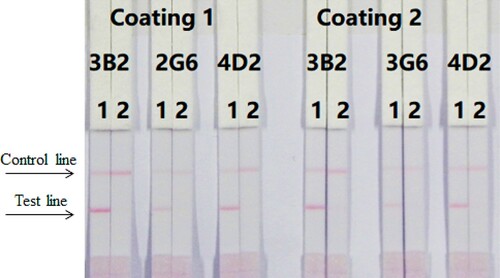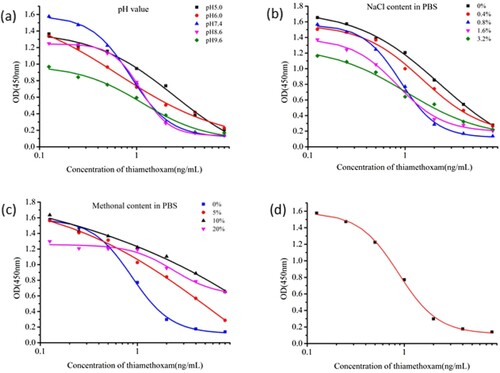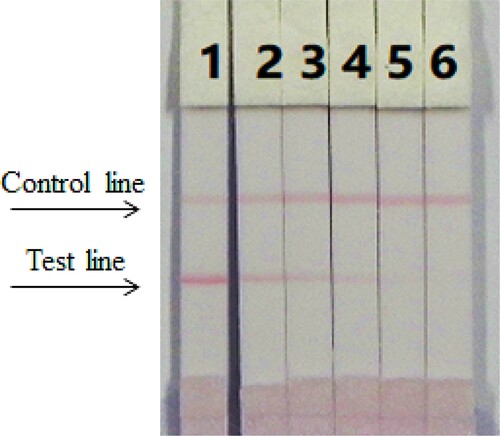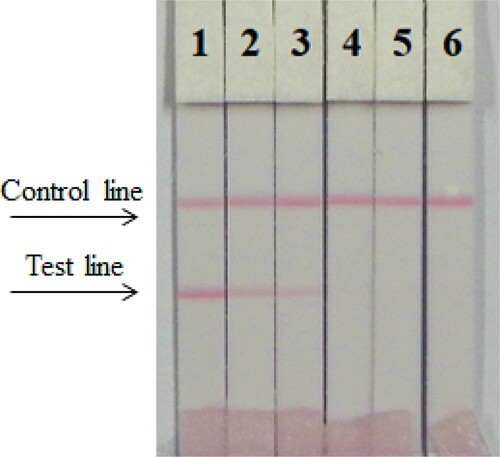Figures & data
Figure 2. The ultraviolet-visible absorption spectra of artificial antigen: (a) TMX-EDC-KLH; (b) TMX-EDC-OVA.
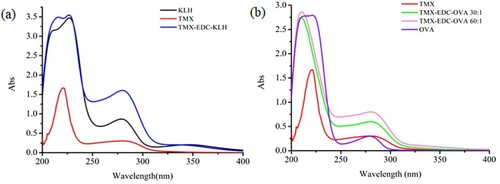
Table 1. Cross-reactivity of mAb to thiamethoxam and analogs.
Table 2. Accuracy evaluation of immunoassay methods for the sample.
Figure 4. Optimisation of different antibodies and coating antigens. Antibody 4D2 and coating 2 were better. 1 = 0 ng/mL, 2 = 10 ng/mL.
